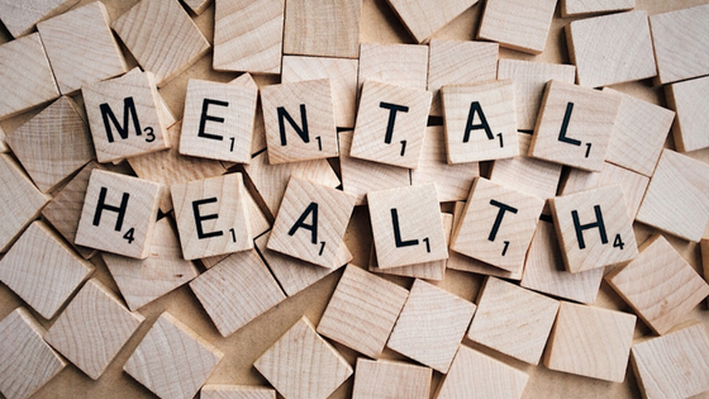|
There is an enormous increase in interest, activity and progress within the field of mental health and the purpose of the Augmented Mental Health interview series is to explore the ways in which enablers from the mental health ecosystem are helping and what they are aiming towards. It is crucial to understand how Augmented Mental Health solutions can benefit people and how these solutions are shaping the future of mental healthcare. By looking into the current situation of mental healthcare from the perspective of industry leaders, insurance companies, therapists, pharma, technologists, employers and patients, we can begin to understand how we can improve mental health. We recently sat down with Julie Capistron and Jamie Price, Co-founders at Stop, Breathe & Think, to hear their views on what the future of mental health care looks like. Tell us about Stop, Breathe & Think. We are the emotional wellness platform for the “under 25” generation. At Stop, Breathe & Think, we believe that when more people find peace of mind, it makes the world a better place. Our mission is to help kids, teens and young adults build the emotional strength to tackle life’s ups and downs. Why did you start your business and what is the vision behind it? I (Jamie Price) am the initial founder and I decided to change paths after working as an investment banker in New York. Experiencing anxiety, mindfulness and meditation were introduced to me by a mentor and it was so profound to me that I wondered why I had not been introduced to it before. I decided to use the tools I learned to create a non-profit and to help others. I began by teaching in inner city schools and did this for 18 years, with positive results. I knew that I wanted to do more and wanted to support these people outside of the workshops so I created Stop, Breathe & Think in 2014. I did not have huge expectations but it grew exponentially. With such organic success, I could no longer sustain it as it was and so partnered in this new start-up. In 2015 and as a separate entity, I joined forces with Julie to create an app that does good. We created this precise emotional platform to tackle the “anxious generation”. We work with 50% under 25 year olds. We also have a separate app for 4-10 year olds with a check-in feature that uses emojis and is a way to bring awareness at a very early age. This teaches practices and habits as we believe that the earlier these habits can be adapted, the more likely that these children can keep them as part of their daily habit. What is your approach and vision towards mental health? It was our vision initially to develop Stop Breathe Think for teens as it is difficult to get kids into mindfulness and meditation. This is why we developed a check-in feature where the first thing that you encounter when you enter the app is to be asked, ‘how are you?’ In response, the user has the option to choose from 100 emotion words. Based on the check in, the user will then be recommended activities tailored to what they are feeling at that moment and can check-in again after the activity. This gives a very inclusive and interactive approach to mental health. In addition, the app is diverse and is all-encompassing, focusing on the user’s well being mentally, physically and emotionally. The suggestions that Stop Breathe & Think offers vary; meditation, breathing exercises, yoga, acupressure, guided journaling and Cognitive Behavioral Therapy modules. All are engaging, short activities that are responsive to how the user feels and gives them the ability to measure their own personal emotional state down the line. This provides insights and the chance to measure their own journey along the road Currently, we have received over 13 million emotional check-ins which gives an incredible view of people’s emotional states. We can also cut this in different ways by locale, time or even the impact of a particular event such as the election. Recently, we did a study on over 10,000 users over 13 months with the help of Nick Shaw, a Statistician from UCSD, and his team, which saw that with regular use of the app, anxiety decreased by 22% over 10 sessions and 46% after 100 sessions. This is a great way to show how efficient our vision is on a large scale. So with these enormous numbers, do you believe that awareness of mental health has grown or simply the world has more triggers than it used to? We would say a combination. Kevin Love, who wrote the Player's Tribune discussed how every single person is going through something and it seems truer than ever. With celebrities such as and The Rock and Demi Lovato discussing their own struggles, it certainly creates momentum and a lot more people join in on the mental health conversation as a result, so there is less of a stigma. On the other side of things, there is more awareness because of major societal changes such as the use of devices cutting into real in-person interactions. With the rapid rise of social media usage and a ‘fear of missing out’ culture being at the forefront of everyone’s mind, people are constantly being witness to other people’s “perfect life’. This can severely affect young people and create lasting self-awareness issues. What are the main obstacles you have faced in the past and are currently facing in this industry? We wouldn’t say that there were hurdles from either user or from the reception because the approach is beginner friendly and this has helped the users to adopt practices seamlessly. We have made sure not to be elitist like some products and instead ensure we are accessible. There have been significant challenges on the business side of things from getting funding to actually building a business and the team as well as the roadmap. However, we have received super positive feedback from therapists, educators and people describing the app to their friends. How do you think that mental health awareness can grow both individually with self-awareness of our own mental health and on a global scale? This is an interesting question. I (Jamie Price) was recently on the panel for the Mental Health Awareness Day that the Sparks (LA women’s basketball team) hosted. One of the recurring themes was about emotional awareness and how important it is to start with this question, both in regards to yourself and the people you work with. There were people there who work with vets, homeless people or even people who have a lot of trauma. All in contrasting backgrounds but all seeing this emotional self-recognition as the critical first step. It is definitely good to have this health awareness day because it builds awareness on a global scale, bringing it to the forefront with the Spark’s own fans and beyond. The more there is awareness, the less stigmatizing mental health awareness becomes. We believe that this can grow by providing tools that people want to use, which is often the most challenging but it is how Stop Breathe & Think is so successful. With the successful combination of digital therapeutics, intervention and high production value content, the app is able to adapt to individual ages and becomes fun to use. This is what the barrier to growth and personal understanding is. Rather than wanting to take a pill every day and associate mental health with difficulty, we aim to be consumer friendly and become part of each user’s routine. What would you say is wrong with the current way mental that health is monitored and observed? Mostly, monitoring mental health is a positive. Feel, for example, is exciting because it pairs a biometric measure with self-selected check-ins and this could be very powerful. Future opportunities could be to utilize the mind and body and how they are connected. Currently, we have not reached the full potential for demonstrating correlations but as soon as we understand that there is a 360-degree view of mental health; what you eat and how you move affects how you think and vice-versa, then we will be able to improve exponentially. There are some current pitfalls with the way some competitors represent some of the data. With the use of check-in streaks or emotional targets, users can get competitive and this can become a source of stress so you should be careful how things are communicated. People often integrate these ideas into their lives and they can become counterproductive. Stop Breathe & Think has this question about how to surface the data back to the user and something like a happiness score or stress graph is tempting but emotional wellbeing is more complex than that. If we used a stress graph and then a user suddenly saw a peak on the graph, this could make them even more stressed. Instead, resilience is what we are aiming for. If a user is going to be sad and stressed then how do we help them through that and remain in tune with them. We think it is important to help each user get back to a baseline after a difficult situation and have confidence in themselves throughout. We do not expect our users to be happy all the time and there is a bit of that going on at the moment. How, in general, can technology help people achieve a better mental health? Creative media formats are valuable and by delivering media in a more interesting way. Mindfulness can be enjoyable and engaging. We have a timeline feature and it demonstrates content that is engaging and unique. We call this bitesize content and could be in the form of a small gif or a graphic. This learning and being inspired to practice mindfulness, easier and lighter. What is the most defining feature of….. And who does it mainly target to help? We would definitely say, the use of check-ins. We also have a variety of modalities because different things speak to different people. With different distribution channels, mindfulness needs to meet the user whenever the point of inspiration is. From being the number one mindfulness platform on Amazon Alexa to becoming licensed for younger children on Hulu as well as becoming part of the curriculum in schools, it is crucial to adapt. The end benefit, for us, is to alleviate stress and anxiety in younger people in an engaging way that they can adopt combining unique content and check-in features across multi-formats. What are some of the future trends you would expect in mental health care? Tailor based assistance from people's behavior and their reactions as well as measuring results and consequently gaining a deeper insight into what impacts mental health. Also, a move towards a more holistic approach in terms of nutrition, exercise and activities and less of a focus on medication to help. Bios Julie Capistron CEO & Co-founder of Stop, Breathe & Think Julie is a former EVP for Demand Media, where she lead the web properties and content studio divisions of over 120 people, 100M monthly unique visitors and $70M in revenue. She was part of the leading team driving the growth of the company through its IPO and beyond. She previously worked as a marketing executive at Yahoo!; where she managed multi-million dollar campaigns, talent and OEM partnerships for Yahoo! Music and drove the international expansion for Yahoo! Search Marketing. She started her career at L’Oreal as a brand manager.  Jamie Price President & Co-founder of Stop, Breathe & Think Jamie left the ranks of Fortune 500 America with the intention of creating positive change in our world. She is one of the founders of Tools For Peace™ a non-profit which has been teaching mindfulness and meditation to inner city teens for the past 17 years. She has also lead the development of the initial Stop, Breathe & Think app. She was previously the VP of Internet Development for American Golf Corporation, where she developed the internet strategy for the largest golf management company in the world. She started her career as a financial analyst at Smith Barney. Jamie has studied and practiced meditation under the guidance of a traditionally trained buddhist teacher, Lama Chodak Gyatso Nubpa since 2000. |
RECENT ARTICLES
The 5 Biggest Threats to Mental Health #CureStigma: Is That Even Possible? Using AI Chatbots for Mental Health Care — An Expert Opinion An Interview With Stop, Breathe & Think Zero Suicide? New Scientific Tools to Turn Fantasy into Reality Smart Mental Health Insurance—The Key to Insurtech Industry Dominations? Can New Mental Health Tech Enhance the Therapeutic Relationship? Data Privacy & Security in the Era of Augmented Mental Health The Death of Psychotherapy As We Know It Mental Health Insurance Crisis: Can mHealth Help? Plug the Employee Productivity Drain with Augmented Mental Health A Global Access Solution to the Trillion Dollar Mental Health Crisis |

 RSS Feed
RSS Feed